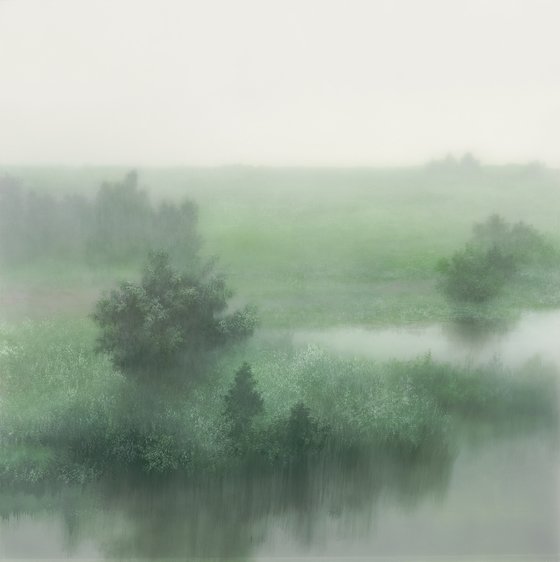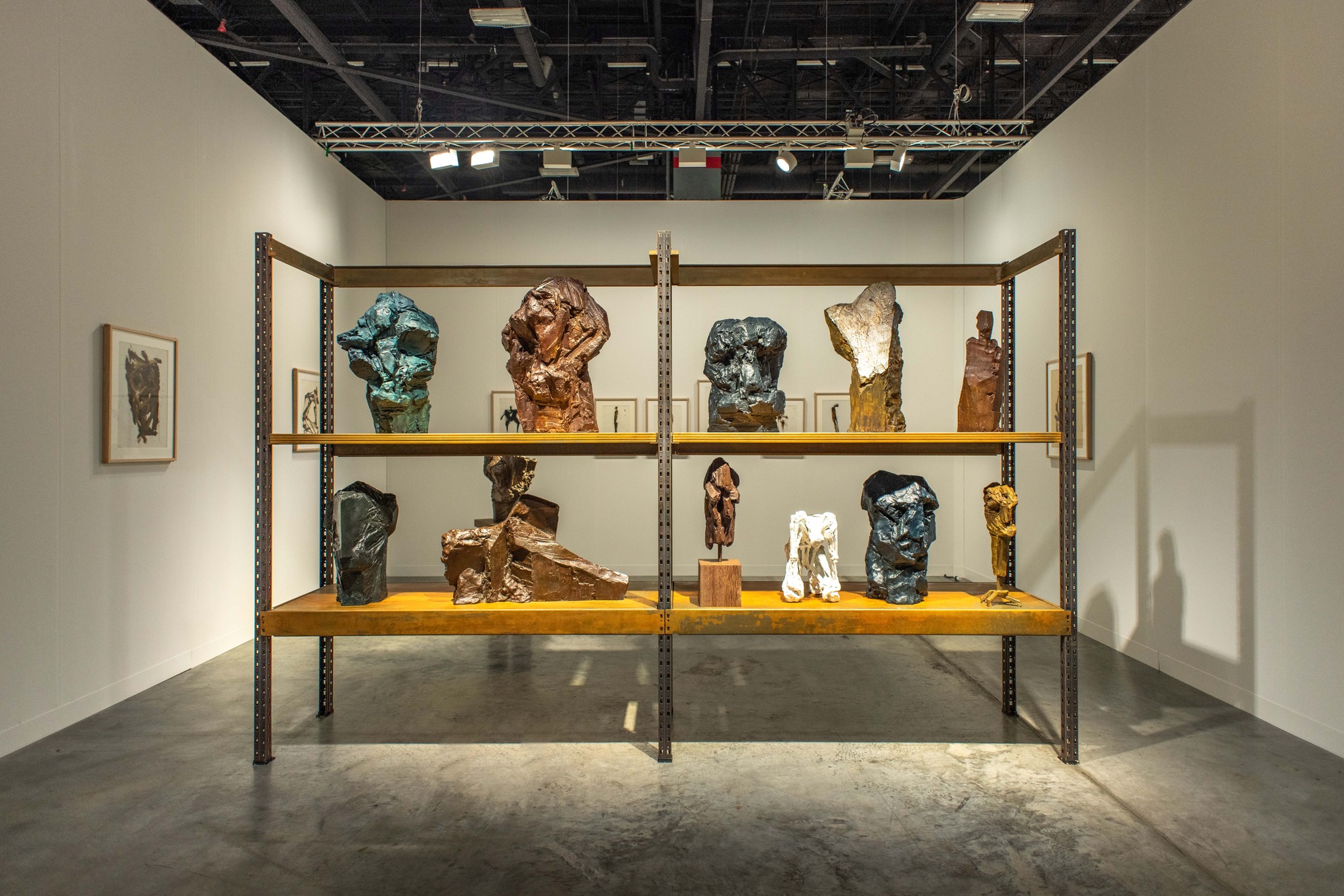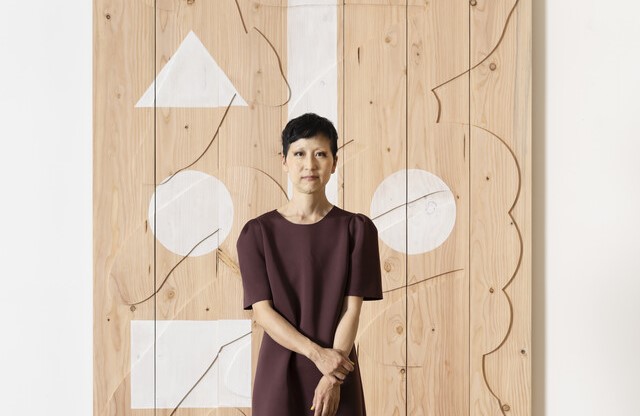Known for his fog landscape paintings, Kibong Rhee (b. 1957) is
one of Korea's leading mid-career artists who has been working in-depth with
installations and paintings since the 1980s. He has been primarily interested
in the structure and flow that constitute the essence of people, objects, and
the world, and the various meanings they derive.
In the beginning of his career, the artist
was interested in external events and phenomena and engaged in material and
formal experiments, but since then, he has been exploring the nature of the
world through the theme of nature. His work evokes philosophical and scientific
contemplation through vision and perception.

Kibong Rhee, There is No Place: The Sleep Machine, 2003 ©Kukje Gallery
In
the early years of his career, in the 1980s, he created abstract paintings that
explored his inner life as an artist, and in the 1990s, he created
installations that dealt with the relationship between nature and humans. Since
then, he has continued to explore the nature and spirit of existence in a new
way by focusing on the properties of water, fog, and dust.
There
is No Place: The Sleep Machine, an interactive installation from 2003, is based on an
exploration of the properties of water and invites a physical response from the
audience. The red droplets of water flowing along a thin line and the white
noise of the machine stimulate the audience's audiovisual senses. The constant
noise and the speed of the flowing water can make the audience sleepy.

Kibong Rhee, End of the End, 2008 ©Kukje Gallery
Rhee sees fog and water as elements
that awaken the spirit of things that are not normally revealed and evoke
fantasies hidden in human consciousness. For example, End of the End
(2008), one of the representative works that brought him to the international
art scene, is an installation that expresses the emotions and imaginary world
through the act of reading books as a visual metaphor using water as a medium.
Tractatus Logico-Philosophicus by Ludwig Wittgenstein,
which he was reading at the time, was made into a plastic book and allowed to
float freely in a blue tank, following the flow of water, to express human
emotional narcissism.
 Kibong Rhee, The
Wet Psyche, 2008 ©MMCA
Kibong Rhee, The
Wet Psyche, 2008 ©MMCAAnother representative work of the artist's that demonstrates his tendency to approach issues of perception based on the properties of water and fog, The Wet Psyche (2008) is a dreamy, fantastical painting of two trees standing against a misty background. The work creates a realistic sense of space that, at first glance, looks like a photograph. The effect is created by Plexiglas overlaid on the canvas with a gap of 0.5 centimeters, which invites the audience to look beyond this translucent ‘layer’ into the misty world behind it. This act is in line with the everyday act of humans experiencing the world through their own frames.
 Kibong Rhee, There
is No Place - Shallow Cuts, 2008 ©Kukje Gallery
Kibong Rhee, There
is No Place - Shallow Cuts, 2008 ©Kukje GalleryThere is No Place - Shallow Cuts (2008) is a large-scale installation that envelops the space with water vapor, which is realized as a water mist. The work also creates a clear sense of distance by creating a barrier between the audience's body and the work, and as the water vapor gradually fills the space, the tree form disappears and reappears, inviting the audience to stare at the fog-like water vapor and the tree form beyond the glass barrier. This extends the experience of gazing into the object on a large scale, filling part of the exhibition space, into a more full-body sensory experience.

Kibong Rhee, Where You Stand Green-1, 2022 ©Kukje Gallery
In
his solo exhibition at Kukje Gallery in 2022, Rhee has continued to explore and
experiment with his interest in the structures and flows that make up the
essence of the world through painting and installation, presenting his
'vanitas' series, a meditation on the cycle and disappearance of nature.
Where
You Stand Green-1 (2022) captures a dreamy waterside landscape in the fog that the artist
has been working on for a long time. As with The Wet Psyche (2008), the
artist overlays two images on the canvas by layering thin acrylic sheets or
polyester fibers at regular intervals, making the water mist, rather than trees
or lakes, the object of representation.
The
artist says that the title 'Where You Stand' is the world itself. He explains
that it is our life to stand there and look at the unreachable world beyond,
and it is the artist's role to bring out the illusions that exist in between.
The visual illusion created by the painting and the 'layer' like water mist
over it metaphorically reveals the mechanisms of these worlds.
 “Where You Stand”
Installation view ©Kukje Gallery
“Where You Stand”
Installation view ©Kukje GalleryIn
addition, Rhee presented a new textual work in which a text excerpt from Ludwig
Wittgenstein's Tractatus Logico-Philosophicus is placed on the rough
surface, in contrast to the delicate and detailed representation of the dreamy
landscape in the previous work.
The
text, which has been featured in previous works, suggests that humans cannot
fully comprehend the world and can only perceive it vaguely through the
'membrane' of language or senses. The artist stacks Wittgenstein's texts, which
appear to be pushed out from the back of the canvas, hiding behind a landscape
of ambiguous shapes, functioning as another form of membrane, revealing the
indeterminacy that surrounds us.
The
artist acknowledges that humans are ultimately aware of the world as it is
reflected back to them, and has focused on visualizing the mechanisms of the
process of self-awareness through their own transformations. By exposing the
gap between the unreachable and the real, art allows the audience to perceive
different aspects of objects and the world through their senses, and to feel
the different layers of the world anew.
“What I want to reveal is the work of making visible a world that is intertwined with many layers. I consider myself more of an engineer than an artist, creating an art of dreamy images.
 Artist Kibong Rhee
©Kukje Gallery
Artist Kibong Rhee
©Kukje GalleryBorn
in 1957, Kibong Rhee graduated from Seoul National University. He was awarded
the Grand Prix at the National Art Exhibition in 1986, and since then has
exhibited extensively. His works are in collections worldwide, including the
National Museum of Modern and Contemporary Art, Seoul; Hoam Art Museum, Seoul;
ZKM Museum, Karlsruhe; and Leeum Museum of Art, Seoul. The artist has also
participated in a group exhibition at the Los Angeles County Museum of Art
(LACMA) in 2021.
Rhee’s
work has been included in the 2016 Changwon Sculpture Biennale, 2012 Mediations
Biennale, 2011 Moscow Biennale, 2010 Busan Biennale, 2009 Biennale Cuvée, 2008
Sevilla Biennale, and the 2008 Singapore Biennale.
References
- 국제갤러리, The Wet Psyche (Kukje Gallery, The Wet Psyche)
- 국제갤러리, There is No Place - The Connective (Kukje Gallery, There is No
Place - The Connective)
- 국립현대미술관, 이기봉 | 젖은 정신 | 2008 (National Museum of Modern and Contemporary Art, Korea, Kibong Rhee | The Wet Psyche | 2008) :
- 중앙일보, 안개풍경 화가
이기봉 "세상이 그렇다, 흐리거나 혼돈이거나", 2022.12.11 :
- 국제갤러리, Where You Stand (Kukje Gallery, Where You Stand) :



















